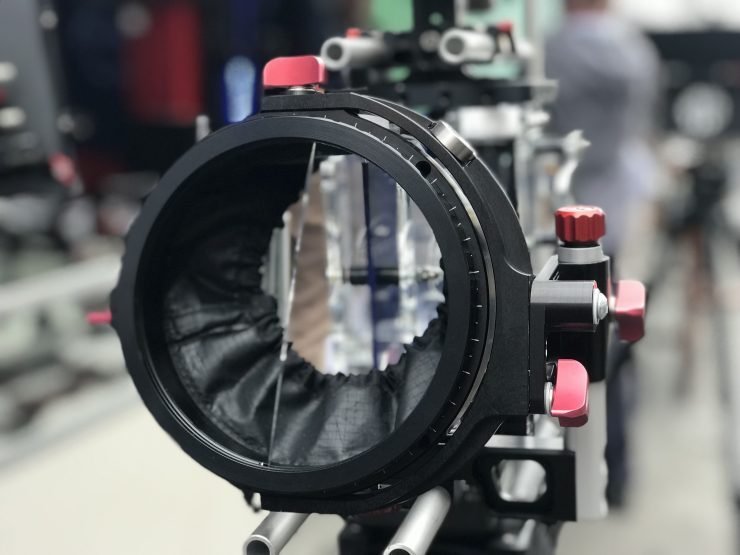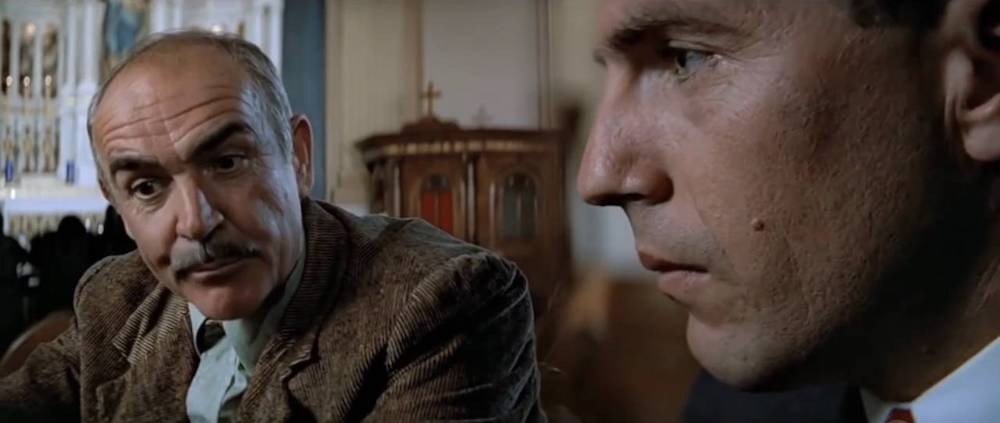-
Posts
13,748 -
Joined
-
Last visited
Everything posted by Phil Rhodes
-
Well, they can, though it's usually an artefact of the backlight rather than the LCD panel itself. What makes me comment, though, is that LCD video walls are rare. What we might be talking about is LED video walls, which use a fundamentally different technology and can absolutely flicker terribly. Can we clear that up?
-
These days, more or less anything will do that, from a video-capable stills camera to a Venice 2. I have a Fujifilm X-H2S stills camera here right now, on demo, which will shoot 6.2K ProRes to internal storage with decent dynamic range. If that's not enough for almost any purpose, I'm not sure what is. As such, usability, ergonomics and other practicalities quickly become the deciding factor. You need to demo some things and shoot short projects on them and figure out what you personally like. Phil
-
I'm being slightly facetious. I'm not really in the business of renting gear, I just have some and sometimes people borrow it. I try to make sure they're reasonably good causes which couldn't otherwise afford things, so I'm not taking work from a real rental house, but that's not so far been much of an issue.
-
I've got more stuff than is in that little van and I don't charge £350/day for it...
-
Kind of interested in this as I've an actually pretty similar collection of stuff I've built up over the years, but including some lighting. I occasionally lend it out to buddies, but have rarely charged other than suggesting a charitable donation.
-

Making new Crystal Sync electronics for CP16R
Phil Rhodes replied to Aapo Lettinen's topic in Cinema Products
Following along with interest, not that I'm a 16mm user but do let me know when you're accepting orders and I'll see about writing it up. -

What are your thoughts on the sumolight sumolaser?
Phil Rhodes replied to Edith blazek's topic in Lighting for Film & Video
Depends how it's been done. Mixing coloured lasers might not be great. Using a blue laser to drive phosphor might be better, but the output wouldn't be a laser anymore (though that's probably fine. You probably don't want laser output as it may speckle unless there are lots of emitters.) -

What are your thoughts on the sumolight sumolaser?
Phil Rhodes replied to Edith blazek's topic in Lighting for Film & Video
Not to self-plug too much, but I think this. -

Arri LPL mount - Why 44mm
Phil Rhodes replied to Boris Kalaidjiev's topic in Lenses & Lens Accessories
Again, bear in mind that cameras from JVC and Sony have all the filters, including mechanical ND wheels, behind much shallower mounts. It's not that. -

Arri LPL mount - Why 44mm
Phil Rhodes replied to Boris Kalaidjiev's topic in Lenses & Lens Accessories
I don't think it's an issue of filters; the JVC GY-LS300 has a rotating ND filter wheel behind a micro four-thirds mount that's not even intended to accommodate Super-35 sensor, and while that's a very small, low cost camera, it demonstrates that it can be done. I would imagine whoever made the decision had a good reason, but nobody seems to know what that reason was. -

Arri LPL mount - Why 44mm
Phil Rhodes replied to Boris Kalaidjiev's topic in Lenses & Lens Accessories
Generally speaking, yes. You are not the first person to ask why LPL is not a shallower mount. It's a very reasonable question. It's not how a lot of people would have done it. -
I'm told this is a reasonable ffmpeg front end for Macs.
-
Reasonably modern movie lights, which includes everything you list, should not flicker at the mains frequency and should behave consistently worldwide. It's increasingly difficult to predict how any lighting will behave, no matter where you are. A lot of modern lighting devices are based on LEDs. Many of them do flicker at the local mains frequency, or perhaps twice the mains frequency (see here at 2:55). Others may use driver electronics which can cause them to flicker at any rate the designer found convenient. Others use pulse width dimming, which may also operate at any frequency. Interiors of modern airliners seem to be almost exclusively lit with LEDs using pulse width dimming (see here at 3:14). It's increasingly common for people to want dimming or even colour mixing for interior spaces and generally that will be done with pulse width. Car tail lights are another issue. Even if you can set the camera up to avoid flicker with one set of lighting, the adjacent light won't be phase locked to it, so you may find there is no solution which makes everything not flicker at once. Some of these problems are also caused by rolling shutters. If you can stand the smeary motion rendering, try the largest possible shutter angle, ideally approaching 360 degrees, but that's not likely to be what you want for a single-camera drama. This is a growing problem and there is no good solution.
-
I tend to use ffmpeg for jobs like this, as you have fine control over everything. If you're comfortable with command line tools, you can do very well. You probably want something like: ffmpeg -color_range 2 -i INFILE -c:v libx264 -preset medium -crf 25 -pix_fmt yuv420p -c:a aac -vbr 4 -s 1280x720 OUTFILE Adjust the crf parameter for less bitrate, higher is less. Run tests of a couple of minutes of footage to find a setting you like before committing to the lengthy job of compressing the whole thing. There's probably a friendlier front end for it you could find and use that. P
-
Hello! I have pictures of you in the desert with a camera somewhere...
-
The problem is parasitic capacitance faced by the signals as they travel around the sensor.
-

Filter order in a matte box.
Phil Rhodes replied to Steven Buckwalter's topic in Camera Assistant / DIT & Gear
You also want the polariser closest to the scene for the strongest effect. Filters such as diffusion will, at least in part, scramble the polarisation in the light and reduce the amount of effect the polariser has. That might be what you want, but be aware. -
Yes, although at some point there has to be a path from the photosites to the amplifiers. OK, more modern stacked semiconductor manufacturing can provide more flexibility in exactly how this is done, and I would imagine Arri has paid for every modern convenience in pursuit of exactly this sort of performance, but the single biggest issue in every cinema-grade sensor is managing capacitance as these tiny signals go flying around and that isn't a problem that can be entirely worked-around. Now what happens when they make the LF version of this...
-
My understanding of this is that active sensor cooling mainly makes sense on long exposures, which is why it's found in astrophotography. I've read at least one paper which suggested it's not particularly helpful for the sort of exposures we use in motion picture work. The other issue is that its only purpose is to be able to cool things below ambient temperatures, which is impossible with simple forced-air cooling. The problem is, any time you cool something below ambient, it becomes a target for condensation. To speculate wildly, it's possible that the design could use a peltier to cool something more aggressively toward ambient, but it's hard to imagine that being easy to do without risking condensation on at least some part of the device. So it's possible, but I'd say unlikely.
-
Yeah. The problem is, that's a claimed SNR of over 100dB, which is barely possible. If true this number will involve some degree of digital noise reduction, which is probably fine, but it's worth understanding what's really being discussed here. After all the thermal noise of just a resistor at 300K is about -84dBm. P
-
Seventeen stops is an... Interesting claim. That's more than 131,000:1. Many companies have made interesting dynamic range claims.






